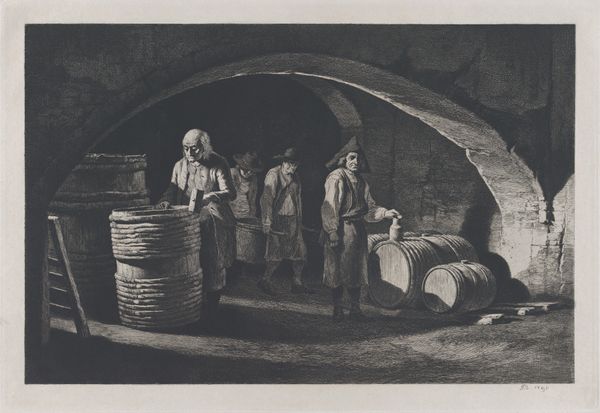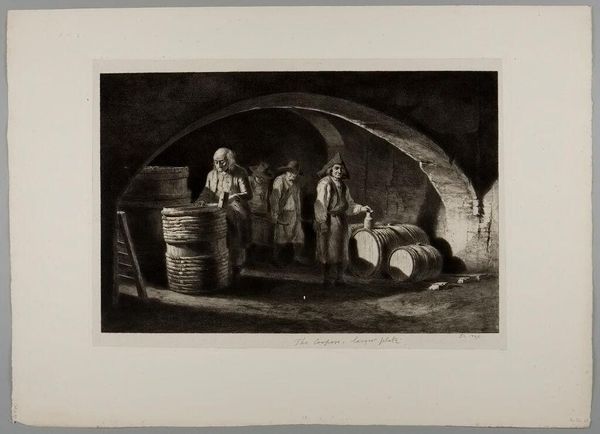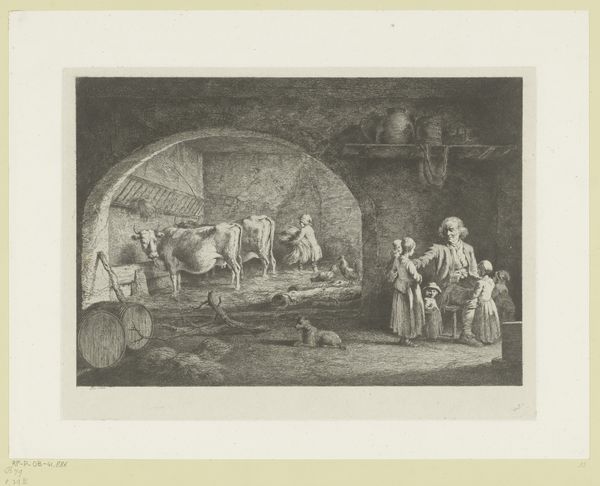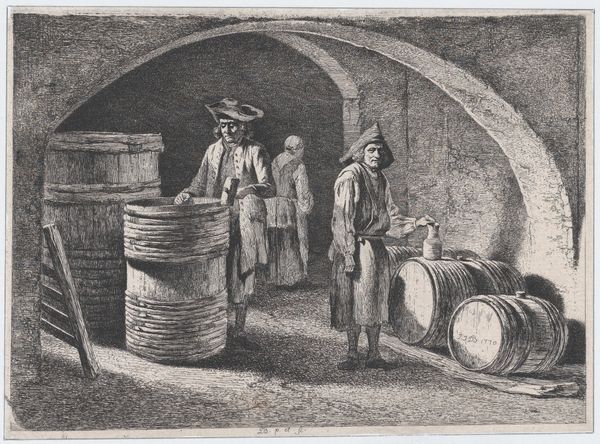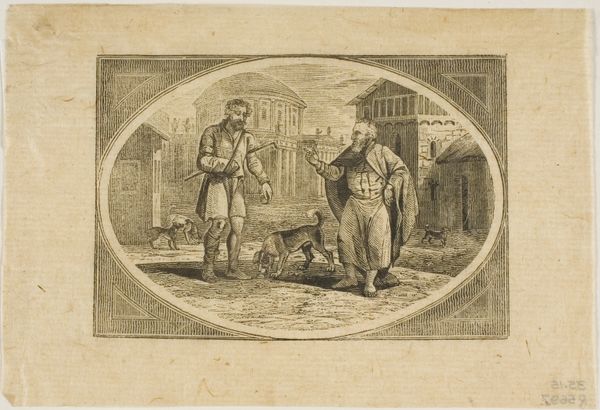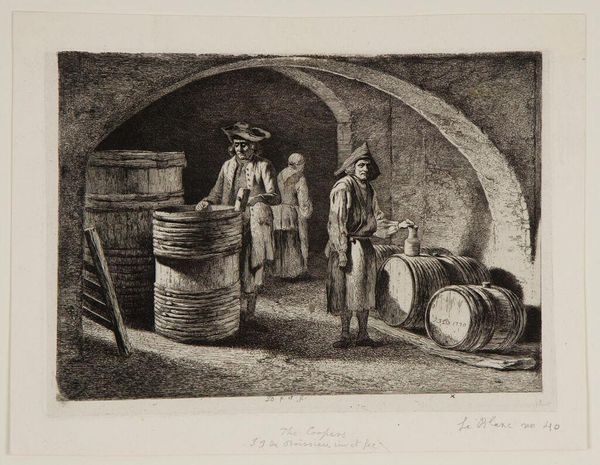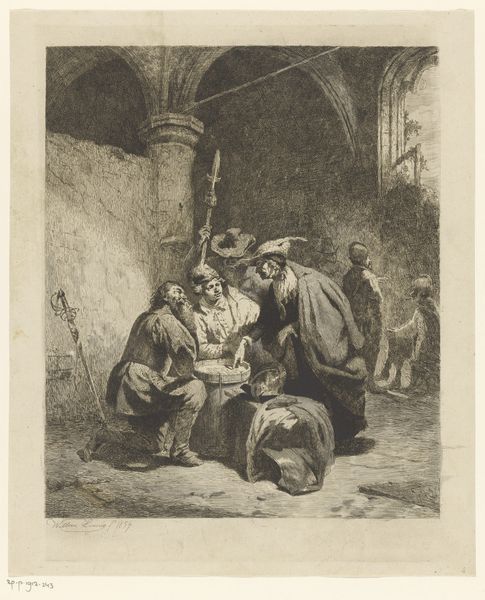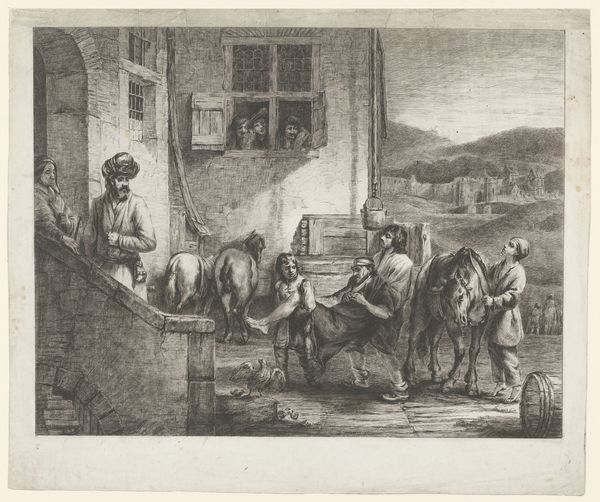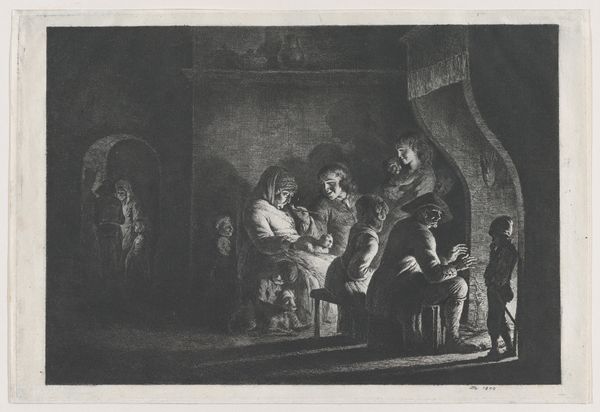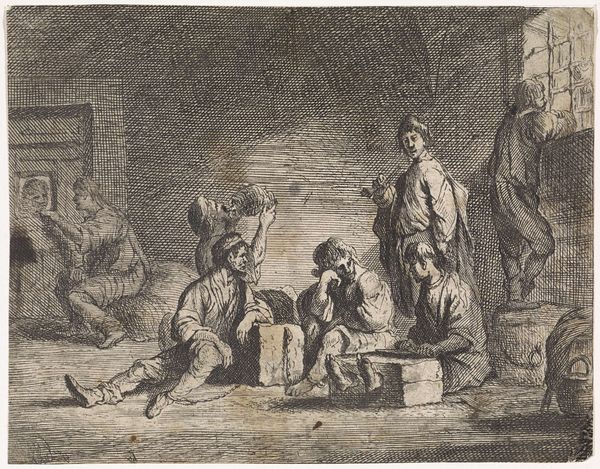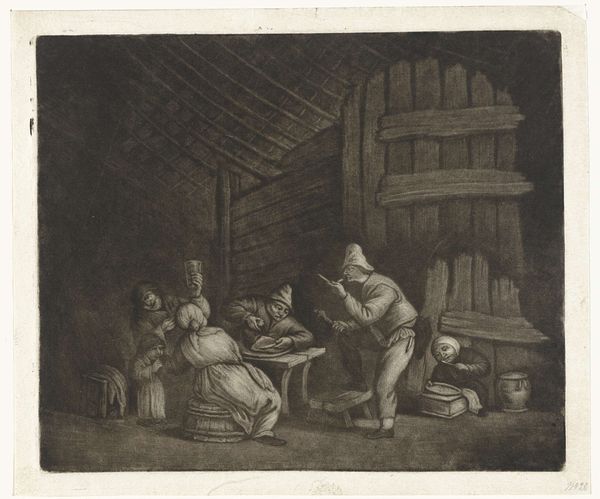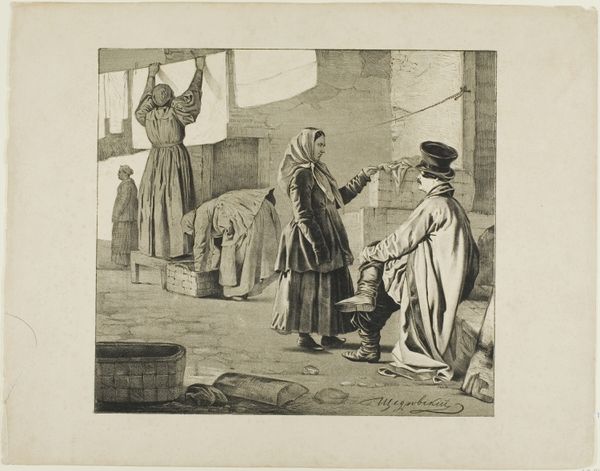
Dimensions: Sheet: 12 13/16 x 17 7/8 in. (32.5 x 45.4 cm) Plate: 11 5/8 × 16 5/8 in. (29.5 × 42.2 cm)
Copyright: Public Domain
Curator: Before us is Jean Jacques de Boissieu’s print, "The Coopers," created in 1790. He used etching and engraving to compose it, and you can see it today at the Metropolitan Museum of Art. Editor: The scene is incredibly dark, almost oppressive, isn’t it? There’s a heavy feeling to the whole thing, accentuated by that low, arching ceiling. It gives a sense of the physical labor involved in their craft. Curator: Absolutely. Consider the cooper's trade itself: demanding manual work in a confined space, shaping raw materials into essential vessels. De Boissieu makes us feel the weight of labor in 18th century society. The printmaking process mirrors the cooper’s process; the lines etched and engraved requiring dedication to production. Editor: I find myself pondering who had access to art like this in 1790. Was this a commentary on the working class for the elite? Were they meant to be seen as the backbone of the burgeoning industrial economy, even? The lack of idealization is striking; these are real people doing real work. Curator: It speaks volumes, doesn't it? He presents an unvarnished portrayal of labor. Look closely at their tools, the rough-hewn barrels, even the coopers’ clothing. The composition itself is very strategic: he emphasizes their collective work rather than individual identity, spotlighting the production chain. Editor: And there's a stark social commentary, too. Their existence is literally underground, aren't they? Are they trapped in a cycle of labor determined by others? You have to consider the French Revolution began just a year earlier and ask, are these coopers agents or victims in this emerging social transformation? Curator: A poignant thought. It brings to mind questions of economic agency during the rise of capitalism. His attention to their labor is far from passive—rather it offers valuable insights into our historical understanding of class and society, I feel. Editor: Indeed. Considering the time, seeing this everyday toil memorialized in art sparks an important dialogue about power, work, and how even simple materials can represent major historical events. Curator: A final reflection—this piece reminds us to delve beneath surfaces and consider materials and social context. We can also discover profound meaning from the stories of laborers like those making barrels long ago. Editor: Yes, a potent reminder that art can also offer crucial dialogue with history, urging us to ponder social fabrics and lived experiences of marginalized communities through time.
Comments
No comments
Be the first to comment and join the conversation on the ultimate creative platform.
